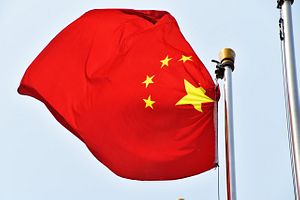It must be a bitter pill for China that its diplomatic relevance on the Korean peninsula continues to slide. Despite accounting for 90 percent of North Korea’s external trade, China sits mostly on the periphery of the diplomatic breakthroughs we have seen in recent weeks.
As March nears its end, we are heading full steam into an inter-Korean summit – the third of its kind, which will take place reportedly at the Korean border village of Panmunjom instead of in Pyongyang.
The event – if it takes place – will see Kim Jong-un travel south of the military demarcation line that separates the Joint Security Area in the demilitarised zone, taking him off sovereign North Korean soil for the first time since he took power.
Beyond the inter-Korean summit, we may also be heading for a U.S.-North Korea summit, which would be a historic first. No sitting U.S. president has met a North Korean leader and now Donald Trump appears determined to become the first. He has accepted an invitation from Kim that was conveyed to him by the South Koreans.
Amid all this, China has had little role.
Yes, Beijing voted for successive sanctions resolutions at the United Nations Security Council last year, helping the Trump administration ramp up its so-called maximum pressure campaign, but China has not been behind any of Kim’s major decisions.
Chinese encouragement is all that is on the table for now. “We welcome the positive messages conveyed by the U.S. and the DPRK on direct dialogues,” said Geng Shuang, a spokesman for the Chinese Ministry of Foreign Affairs after the Trump-Kim summit was announced. “The Korean peninsula nuclear issue is moving in a right direction towards its settlement. We fully commend and support the efforts made by all relevant parties to resolve this issue through dialogue and consultation,” he added.
The enthusiasm Geng expressed was sincere. China is pleased to see the United States and North Korea step back from the brink. Instead of nuclear threats, the two sides are talking.
With rumours that South Korea and the United States will omit the involvement of so-called strategic assets in their upcoming Foal Eagle military exercises, China has, in a way, seen the realization of its “freeze-for-freeze” proposal. If the rumours are true and the alliance decides to not involve nuclear submarines, heavy bombers and aircraft carriers in the upcoming exercises and Kim holds true to the promise he gave the South Korean envoys in Pyongyang not to test any ballistic missiles or nuclear devices, both sides have made important concessions.
But no one’s calling this a “freeze-for-freeze” just yet – certainly not South Korea, North Korea or the United States, none of whom expressed any enthusiasm for the proposal.
And if Foal Eagle does happen at a reduced level from last year, it will not be because of Chinese diplomatic wrangling. Everything that is happened to this point has been due primarily to the dynamism of South Korean President Moon Jae-in’s diplomacy.
It is striking that all this has happened as China’s “two sessions” legislative meetings have convened in Beijing. And now, with the National People’s Congress having rubber stamped Xi’s route to the presidency and the two-term limit removed, the Chinese leader is cleared to continue his crystallization of a great regional role for China.
But even if China aspires to lead the region, the next months on the Korean peninsula may underline its inability to do so. Beijing made improvements to its implementation of UN sanctions over the past year, but when it has come to finding a diplomatic path ahead of the intractable denuclearization problem on the peninsula, China came up short.
A version of this article first appeared in the South China Morning Post. It is republished here with kind permission.

































